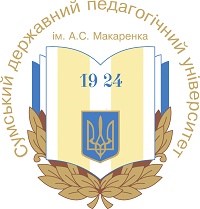DOUBLE BASS IN CHAMBER MUSIC OF THE BAROQUE PERIOD (ON THE EXAMPLE OF THE TRIO-SONATAS BY Y. D. ZELENKA)
DOI:
https://doi.org/10.32782/art/2025.2.18Keywords:
double bass, violone, chamber music, trio sonata, Baroque, basso continuo, ensemblAbstract
The article explores the role of the double bass in chamber music, with particular focus on the Baroque period. In the musical practice of the 16th-17th centuries, the violone (double bass) was actively used in the church, opera and chamber repertoire, which is confirmed by both musical sources and visual materials of that era. During the period of formation of the homophonic style (1600– 1750), known as the era of the basso continuo, a special group of continuo accompanying instruments (basso continuo) appeared alongside melodic voices – vocal and instrumental. Leading musicians of that time emphasized the important role of the stringed bass instrument, which ensured the integrity of the Baroque sound. Trio sonatas, as one of the early forms of chamber music, played a significant role in the musical culture of the 17th century, both in the genre of church sonata (Sonata da chiesa) and secular (Sonata da camera). The typical instrumental composition of a trio sonata included two treble voices that carried and developed thematic material, and a bass line with a digitized bass. Various instruments were used to perform the bass part, but the preference was most often given to the violone, especially in cases where the upper voices were performed on string instruments. In the process of developing concert practice, the soft sound of the viol is gradually replaced by instruments of the violin family, which have a more expressive and bright timbre. In parallel with this, an orchestra is formed, the composition and instrumentation of which gradually expands over time. The research examines the instrument's functional position within ensembles and its evolution from an accompanying to a melodic role. Special attention is given to the trio sonatas by Jan Dismas Zelenka as an example of an underexplored repertoire, offering new pedagogical and performance perspectives. The study highlights the importance of the double bass in ensemble interaction and its expressive potential within the framework of historical performance practice.
References
Bonta, S. From Violone to Violoncello: A Question of Strings? Journal of American Musicological Society. 1977. III. 64–99.
Bonta, S. Terminology for the Bass Violin in the Seventeenth-Century Italy. Studies in Italian Sacred and Instrumental Music in the 17th Century. London, 2024, 352 p.
Grodner, M. Comprehensive Catalogue of Music, Books, Recordings and Videos for the Double Bass. Bloomington: Grodner Publications, 2000.
Morton, J. Back to the future: the renaissance of the violone. Ars Antigua Presents : World Class Performances of Early Music. URL: https://arsantiguapresents.com/archives/articles-bibliographies/back-to-the-future/
Planyavsky, A. Geschichte des Kontrabasses. Tutzing: Hans Schneider Verlag, 1984. 917 p. [in German]
Planyavsky, A. The Baroque Double Bass Violone. Scarecrow Press, 1998. 196 p. [in English]
Praetorius, M. Syntagma Musicum II. Oxford: Clarendon Press, 1980, 184 p. URL : https://archive.org/details/syntagmamusicumo0000prae/mode/2up
Reich, W. Preface. Zelenka, Jan Dismas, Sonata III in B Flat Major for Violin, Oboe, Bassoon and Basso Continuo. Kassel [etc.]: Bärenreiter, 2009.
Reich, W. Preface. Zelenka, Jan Dismas, Sonata V in F Major for two Oboes Bassoon and Basso Continuo. Bärenreiter Kassel, 1992.
Webster, J. Violoncello and Double Bass in the Chamber Music of Haydn and His Viennnese Contemporaries, 1750–1780. Journal of American Musicological Society. 1976. 29, 413–438.
Zelenka, Jan Dismas, Sonata II in g minor for two Oboes, Bassoon and Basso Continuo. Kassel [etc.]: Bärenreiter, 2009.
Zelenka, Jan Dismas, Sonata IV in g minor for two Oboes, Bassoon and Basso Continuo. Kassel [etc.]: Bärenreiter, 1994.









